Message about the death of your ex general director Steven Jobs was disseminated by Apple's board of directors on Wednesday evening, October 5th.
The legendary Jobs died at his home in Palo Alto, California, surrounded by family and loved ones.
We are sad to announce that Steve Jobs died today. He was an infinitely talented, brilliant and energetic person! These qualities became the source of his many discoveries that enriched the lives of people around the world! - the message reads.
Jobs suffered from a serious illness - pancreatic cancer. Since January 2011, he was on indefinite leave for health reasons, and at the end of August there was a statement that the permanent leader of Apple Corporation was leaving his post as CEO.
Apple just lost a mastermind and the world an amazing man. Those lucky enough to know Steve personally have lost a wonderful friend and mentor. He left behind a company that only a genius like Steve Jobs could have created. His spirit will always be the reason to continue working! - this message appeared on the company’s official website.
Crowds of Jobs admirers gathered in front of Apple brand stores in New York and Los Angeles. President Barack Obama, New York Mayor Michael Bloomberg, founder social network Facebook Mark Zuckerberg, Microsoft CEO Bill Gates and many others.
Such a loss can only be compared with the death of John Kennedy or John Lennon! “I don’t even know who else, except Martin Luther King,” said Steve Wozniak, with whom Steve Jobs created his own Apple corporation in 1976.

Experts argued that Jobs' talent forever changed the high-tech equipment manufacturing industry.
Three significant moments in the history of the company were: the launch of the first personal computer Apple in 1977, inventing the first way to legally purchase music online using the iPod and iTunes programs in the 2000s and the emergence of the first “apple” iPhone smartphone in 2007.
Jobs died the day after the presentation of the company's new phone, the iPhone 4S. The town of Cupertino was chosen as the location for the presentation. Many attributed this to the fact that the company’s new product, as usual, would be presented by Steve himself.
However, a terrible illness did not allow him to leave home for long distances, and the hopes of millions of Apple fans were not destined to come true. Steve was never able to go on stage with the company's next product in his hands. The iPhone 4S was presented by the new head of the company, Tim Cook. Who knows, but perhaps the disappointments of fans around the planet are not caused by technical characteristics a new product from which, as always, they expected something special, namely the fact that Jobs did not once again give the world his modest smile.
Currently, Apple is considered one of the largest manufacturers of computers, audio players and software.
In May 2011, the American corporation was recognized as the most valuable brand in the world.
The New York Times published an interesting article by Fred Vogelstein under the intriguing title “And Then Said Steve: let it appear iPhone" It contains hitherto little-known facts about the difficulties the company’s engineers faced. Apple who were given the task of realizing an incredible idea Jobs.
In contact with
For example, this is a fact - Andy Grignon, who was responsible for developing the antenna for the future smartphone, actively argued with the guru, proving that radio waves do not pass through metal. And, therefore, it is simply impossible to create a working phone in the form in which the designer imagines it. “He won’t call” - today it sounds like a joke, but it was from such pieces that the technological miracle, later called.
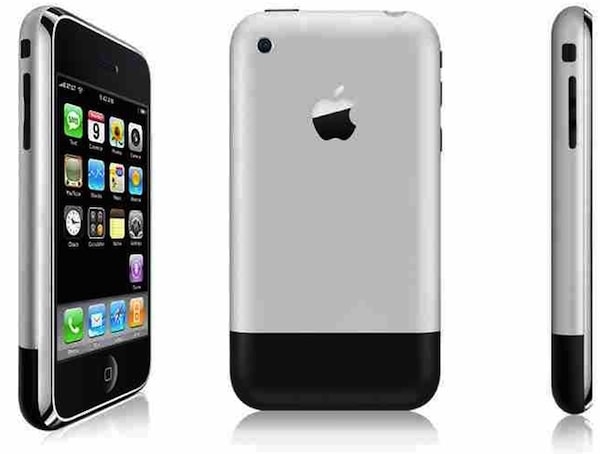 Beautiful brick - that’s what the iPhone was, invented jointly by the chief designer Apple and its founder. As Phil Kearney, an engineer who quit his job, told Apple in 2008, all these creative individuals from related departments last encountered a science called physics in the 8th grade. And truly savvy technology specialists could not explain to them that the metal case shields the signal and this is an axiom in radio electronics. You can't make radio waves travel through metal, so Steve And Johnny with naive eyes they answered - and you make such a small gap through which they will get out. Artists, dreamers, innovators - with their ideas they drove designers and engineers to the brink of insanity.
Beautiful brick - that’s what the iPhone was, invented jointly by the chief designer Apple and its founder. As Phil Kearney, an engineer who quit his job, told Apple in 2008, all these creative individuals from related departments last encountered a science called physics in the 8th grade. And truly savvy technology specialists could not explain to them that the metal case shields the signal and this is an axiom in radio electronics. You can't make radio waves travel through metal, so Steve And Johnny with naive eyes they answered - and you make such a small gap through which they will get out. Artists, dreamers, innovators - with their ideas they drove designers and engineers to the brink of insanity.
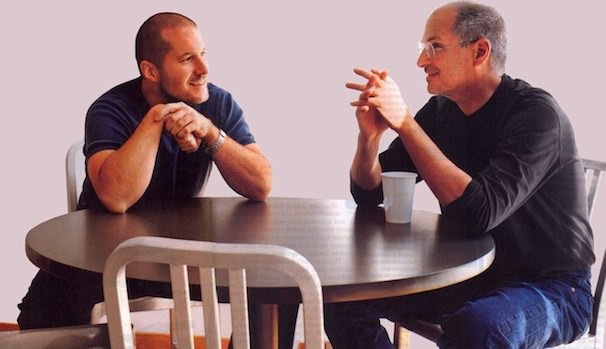
Besides, Steve Jobs He was a very difficult person; in his working methods there was no room for sentimentality towards his employees. Incredibly tense atmosphere, moral pressure, the undeniable word of the authorities - the future iPhone and especially iOS were created in an extremely dramatic environment. The concept of a deadline for certain stages of the project hung like a sword of Damocles, and often employees broke down, spontaneously quitting work and going to hell for several days. Once, the director of the iOS design department, Kim Vorrath, slammed a door in her anger with such force that they tried to deal with the structure, which was warped from the impact, for more than an hour. As Andy Grignon says, we stood, looked at her and realized that it seemed kind of funny, but at the same time we thought “how is everything boring.”
The very same interesting story, from those given in this article, is probably a story about that terrible night back in 2007, on the eve of the presentation iPhone. Engineers along with other employees Apple We checked into a nearby hotel and at 10 am we had to go to the event in a friendly crowd. There was no anticipation of triumph - the night passed in horror from thoughts of how everything would go awry technical reasons. An incredibly complex gadget is being demonstrated for the first time in the world, in the live-action format so beloved Steve Jobs– and everything should work on the first try and without any delays.
This is the bane of any engineer who finds it very difficult to understand why unnecessary risks are needed when most of the similar events in Silicon Valley are carried out in a much more conservative style and with no less success. But the boss gives the order and doesn’t care how you will solve the problem of unexpectedly missing access to the Internet or interference with wireless communication in the hall. To the credit of the staff Apple, no truly unfortunate incidents occurred at any presentation. But almost no one knows what it cost those who remained behind the scenes.
For everyone who is on first name terms with English language, we recommend reading (Fred Vogelstein) in full, this will help you understand what really stands behind the release of each new product from the Cupertino company and its competitors. And it will be good material for reflection on the second anniversary of his death Steve Jobs(October 5, 2011).
He easily survived all this, becoming the most desirable smartphone in the history of mankind. The appearance of an almost magical handset at that time turned out to be tantamount to an earthquake - the enthusiastic creators of the iPhone achieved an unconditional breakthrough. They truly reinvented the smartphone, because it was the iPhone that set the main vector for the development of the entire “smartphone” industry. Only an ignorant and obviously biased reader is capable of thinking any differently.
It's time for a well-deserved rest...
A very interesting point: the “fruit-aluminum” device was officially scrapped just now! Yes, the month that ended in June turned out to be, so to speak, “extreme” for the legendary iPhone 2G. According to its internal rules, Apple has stopped providing service support for the gadget, officially considering this “veteran” device to be out of use forever. There’s nothing you can do about it – the real five years have long passed.
The good fellow “original iPhone” (lovingly referred to as the “gi-two”) recently joined the long list of old AirPort Express, XServe from 2006, iMac G5, Mac Mini from late 2005, PowerBook G4 and other products that have “won their way back”. Such “execution” lists actually appear every year. Now 2G cannot be officially repaired. Well, that is, it’s not “legal” anymore. What can I say here? There is an end to everything, but now we’ll talk about the beginning!
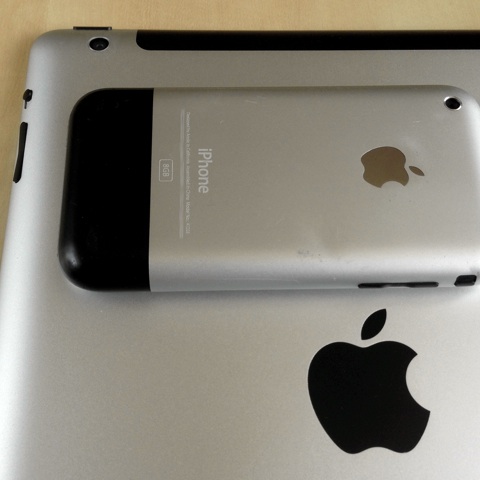
Why was this iPhone needed?
The very first generation iPhone “grew” straight from the iPod. The main creators of the iPhone were well aware that the global player market was facing a gradual but sure decline - the same decline that we are seeing now. Just look at the sales over the past few years! Somehow only the station wagon is holding on iPod touch due to a fair amount of functionality and access to virtual wealth App Store on par with the iPhone. Moreover, we are talking about the most popular players on the planet, which have completely eaten up the once formidable Walkman! All other global vendors do things even more prosaically.
The reason for this was smartphones, whose extensive list of talents was already replenished with quite good MP3 playback. This is the whole point, and not at all in Yabloko’s terrible desire for innovation. Who wants to carry two devices when you can easily prefer an all-in-one gadget? This trend was obvious already in those distant times. Steve Jobs felt the “wind” very well. Wanting the good of his corporation, which had recently risen from the dead thanks to the excellent success of the iPod, he simply could not “start” the situation.
So, following the triumph of the iPod, Apple literally had to create its own “smartphone”... well, of course, completely from scratch! And it’s very good that I had to.
The result of colossal work
“I have been waiting for this day for two and a half years” – the initial phrase of the serious Jobs from the stage instantly set the desired emphasis.
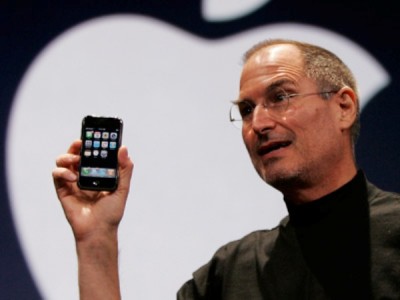
Let's take a moment to imagine the actual scale of work on the project! Internally dubbed “Purple 2,” it eagerly absorbed the efforts of more than 200 engineers who began work in February 2005. Labor that seemed endless to everyone! Oh yes, the creators of the iPhone were faced with a myriad of difficulties, and the failure of the never completed “Purple 1” loomed behind them all the time. This idea, shared with Motorola, tried to combine a telephone and an audio player, but it didn’t work out. The “semi-apple” Motorola ROKR, completely forgotten by everyone, did not add optimism.
Teams of specialists isolated from each other worked tirelessly, trying to meet the draconian deadline set in advance by Jobs. It was simply scary to look at the completely exhausted engineers. Despite such dedication, in the fall of 2006 the smartphone was still too raw. This is to put it mildly. The first iPhone was already criticized for many obvious shortcomings (including the camera, MMS, and even - ha ha! - an insidiously non-removable battery), but then the list of its problems was simply enormous.
The world's first multi-touch phone kept dropping calls, its capricious battery suddenly stopped charging, and applications were glitchy. Meanwhile, the annual Macworld conference was only a few months away. The atmosphere became increasingly tense, the pressure from everywhere intensified, and ridiculous rumors multiplied every day. In part, the cocky Steve himself contributed to this, for some reason publicly declaring that new smartphone will not be based on Leopard OS, which hurt the feelings of fans. Well, be that as it may, the new “fruit recorder” was bound to become the main highlight of the conference. Everyone was looking forward to high-profile releases from Jobs, who revived the company! And the audience finally waited.
How the dictatorship of the operators ended
Speaking seriously about the iPhone, one cannot fail to note the sharp change in the very model of introducing new cell phones. If previously large telecom operators unconditionally dictated the specifications of handsets to manufacturers, bringing them to the mass market strictly “bundled” with their service packages, then starting with “stubborn” 2G, the situation, let’s say, has changed. The creators of the iPhone, led by Steve Jobs, managed to enlist the invaluable support of one of America's largest operators cellular communications, what is called completely insisting on one’s own.
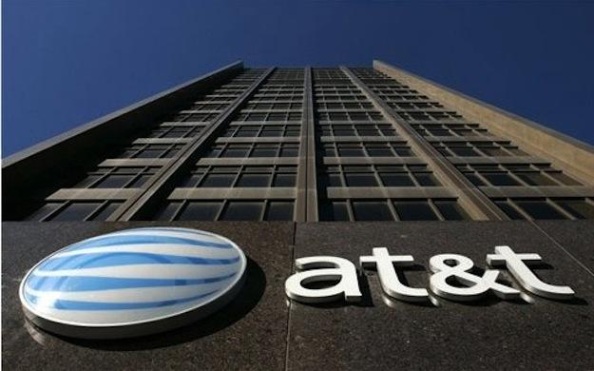
Now the vendor dictated all the conditions, simultaneously persuading the giant AT&T to invest several million in the development of the so-called visual voicemail(visual voicemail). The most energetic Apple helmsman simply convinced the head of the corporation, Stan Sigman, that the future lay with his handset. Not without an early prototype of the iPhone, which was “quietly” shown to Sigman back in December 2006 and instantly earned him the title of “the very best gadget ever seen." Shocked, AT&T agreed to everything - this is how the vendor took control of the situation for the first time. This practice is now ubiquitous, but it began with Apple... more precisely with Steven Paul Jobs, who is capable of performing miracles of persuasion when he needs to.
iPhone phenomenon to the people
The seemingly ordinary January of 2007 became a landmark for the entire industry. Uncompromising leadership, coupled with the hellish months of work of two hundred passionate talents, finally yielded results. We won’t describe the presentation itself for the thousandth time, adding a couple of lines about real sales. When the iPhone with its huge (of course for those times) display, convenient Internet browser and amazing touch interface - not to mention the Martian design! – ended up on store shelves, people started buying it almost immediately. Many people began to choose him. The creators of the iPhone did not spoil themselves in vain.
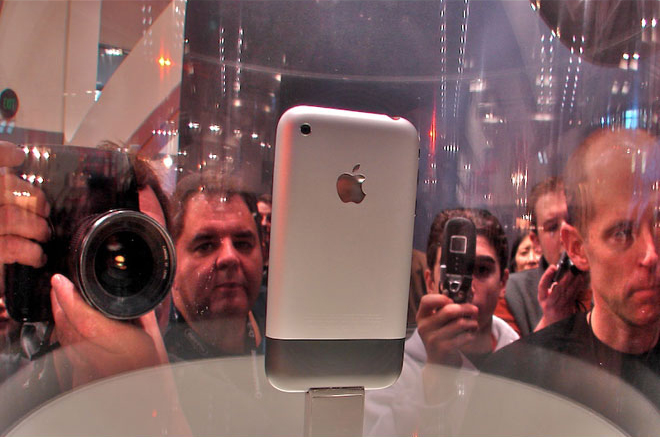
Starting on sale six months after its presentation in July 2007, the iPhone 2G gained 270,000 buyers in the first 30 hours. He reached the proud million mark on the 74th day. And then there was the iPhone 3G and the appearance of the App Store, but that’s another story...
The apple that shook the world
Way ahead of its year original iPhone became Apple's third global breakthrough. First there was the Macintosh from 1984, then in 2001 the beautiful iPod appeared. Do you remember how Jobs, still full of energy, then described the deep essence of the unprecedented “smartphone”? According to Steve, the metal iPhone merges a widescreen iPod with touch controls, a revolutionary mobile phone and a portable gadget for comfortable Internet surfing. Everything said is absolutely true.
Was the iPhone perfect from the very first minutes of its introduction? Well of course not! The iPhone is not perfect even now in its sixth incarnation. Apple mobile technology has obvious oddities, and it also has a lot of ridiculous limitations. This is true. Holy fan feelings here should not outweigh basic common sense! And yet, the creators of the iPhone should bow down in such a way, regardless of what OS your phone is powered by.
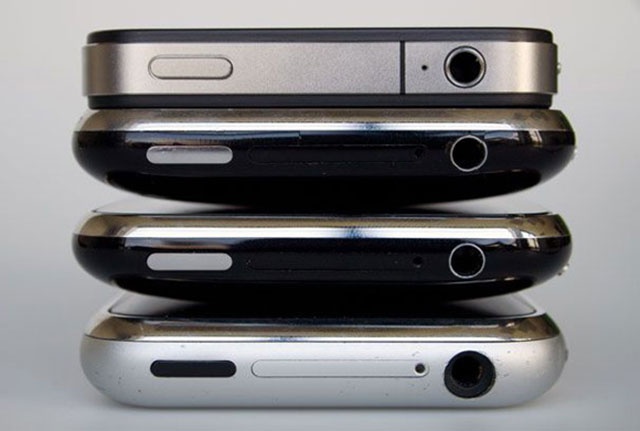
What would you do now without the ubiquitous multi-touch interfaces, without an application store a la the bottomless App Store and without the very “i-concept” of a universal touch assistant? Funny. When Steve showed multi-touch for the first time, the crowded room simply roared with delight! The first original iPhone is pretty much the progenitor of all modern smartphones at all. In the turbulent history of IT technology, it is difficult to find another product that was so far ahead of its time.

Do I need to repeat once again that a number of happy people still have their old iPhone 2G working properly? Hard-working smartphones simply don’t know that their parents have already abandoned them...
